Below is a list of Frequently Asked Questions, and some possible responses to them which are discussed in the Control Therapy Training Manual and in Control Therapy Last Lecture template. If used as part of a course, these FAQs and the responses can be used as possible hand-outs during the appropriate weeks of the class where they might be asked (or covered in the class material). If not, this list might be helpful for the final session if there are any questions the instructor feels are important to discuss with the class.
If you have a question, and can't find the answer here, please don't hesitate to contact us.
NOTE: Questions related to the administration of the SCI Test can be found on the SCI Test Site; questions related to the SCI of a research nature can be found on this page and on the Shapiro Control Inventory (SCI) Manual page.
Students (and faculty) doing research with the SCI, who have gone through Institutional Research Protocol, have permission to use the SCI at no charge. Please consider this statement as written permission.
This statement was drafted in response to the request below
from: Kether
Sent: Thursday, August 03, 2023 8:46 AM
To: support@controlresearch.net
Subject: Requesting Written Permission SCI
Good morning, My university requires written permission for use of any and all instruments used for PhD Dissertation.
I am seeking written approval to use the Shapiro Control Inventory (SCI) for my PhD Dissertation with Cappella University to measure the predictor variable of sense of control. May I have your written permission to use this instrument, please?
Sincerely,Kether Flowers-Dalton, MS
SCI Manual Chapter 2. Chapter 2 gives an overview of the different scales the SCI contains. So, let's say, on p. 19, you decide you want to score the positive sense of control scale, and on p. 22 the scale 6, positive yielding mode of control.
Starting with the positive sense of control scale: you look on p. 72-73 and you will see the 11 items that comprise the positive sense of control scale. Therefore, you find the mean and standard deviation for that scale using those items. A copy of the SCI is in Appendix 1.
For a positive yielding mode of control scale, there are 16 items in the positive mode of control scale. Those items are listed on p. 182. Again, use the same process to create the mean and the standard deviation.

See Professional Interests to look at an update of topics, country, langauges. And also the manual for a list of different populatons the SCI has been given to. Shapiro Control Inventory Manual
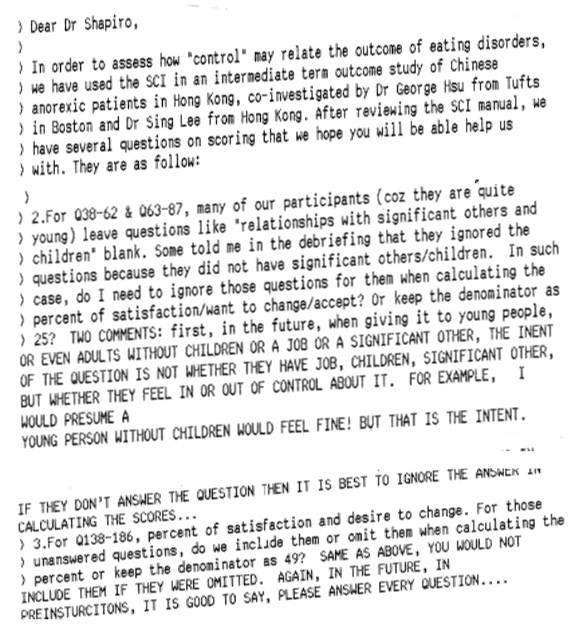

Response: Issue of Overcontrol; Issue of Self-Control; Issue of Agency and where to find in manual.
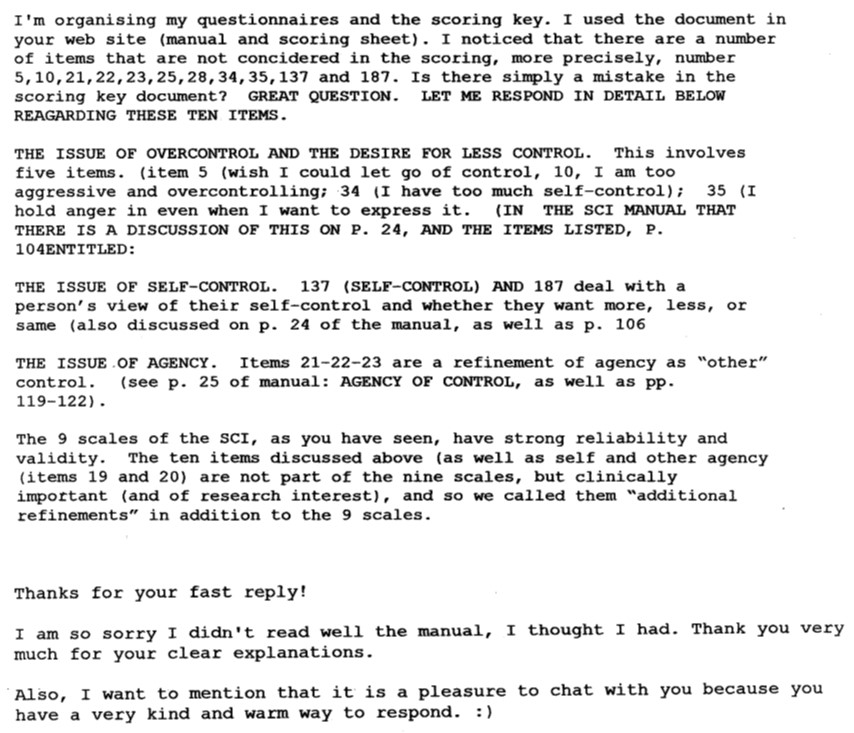
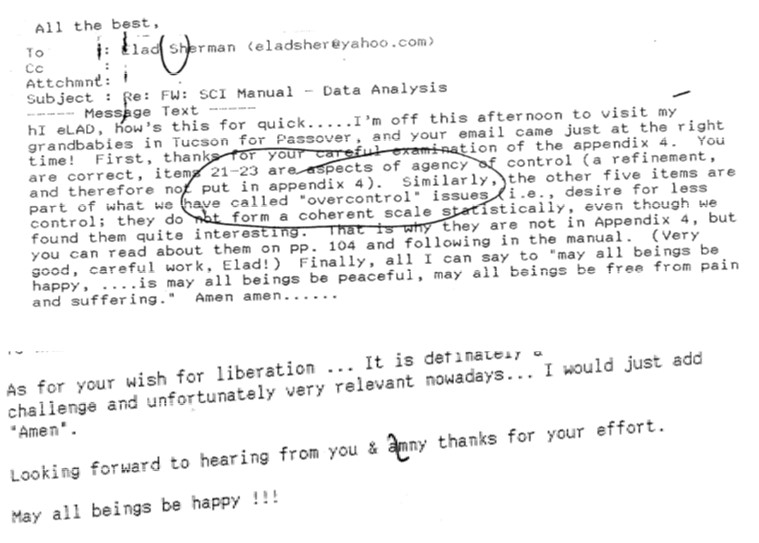
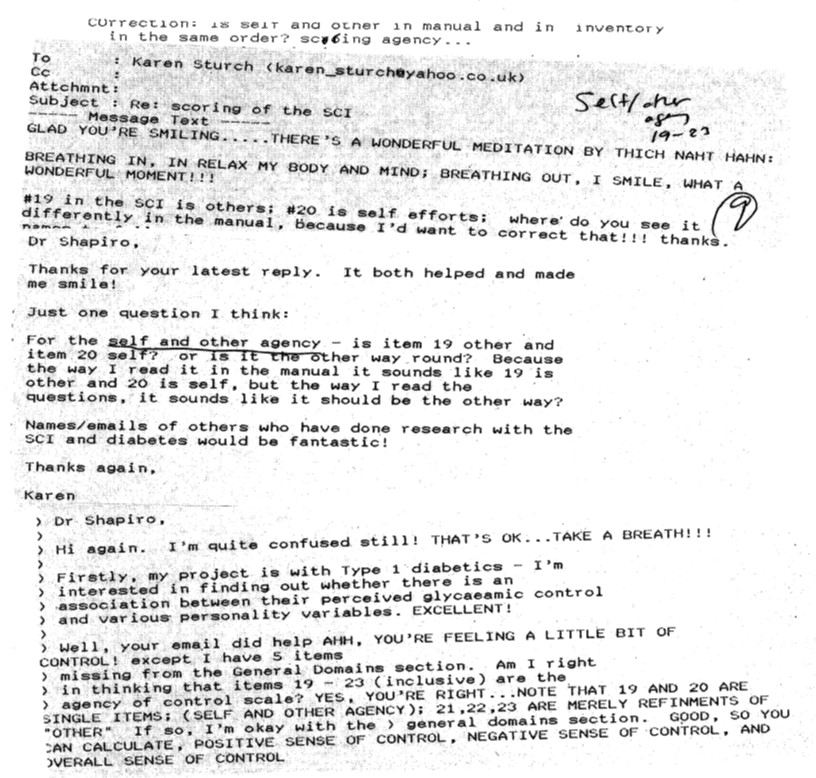
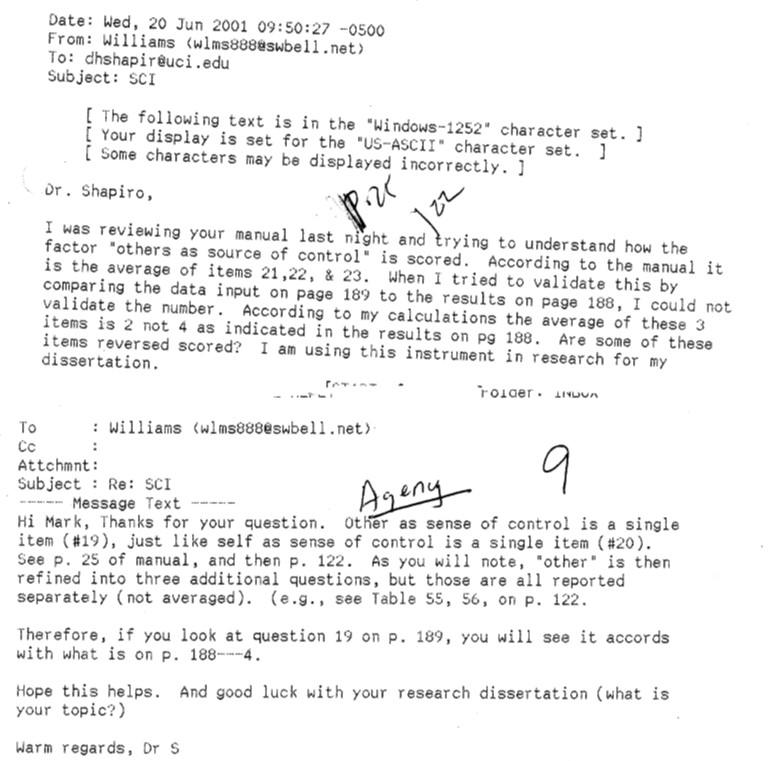


Note paragraph two on too low, normal, too high

Thank you for your question and request for information. Pages 30-55 of the SCI manual (Chapter 4) provides extensive reliablity and validity studies. Table 7 (p. 36) provides both alpha internal item consistency and test/retest reliability.
(Note, the SCI is automatically scored when it is taken on the website; there is also a one page overview sheet for scoring; this responds to the question of how to find the different scales, information in the actual manual.
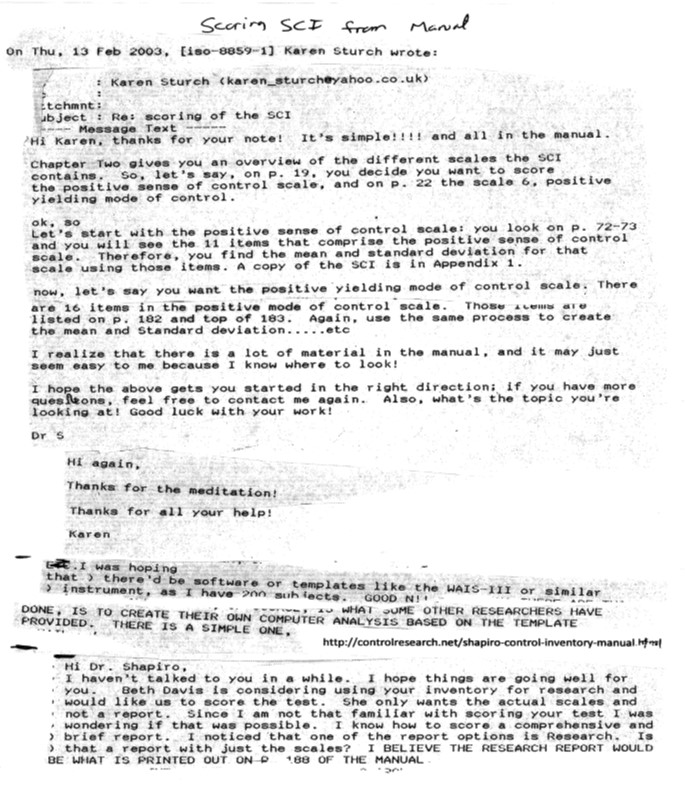

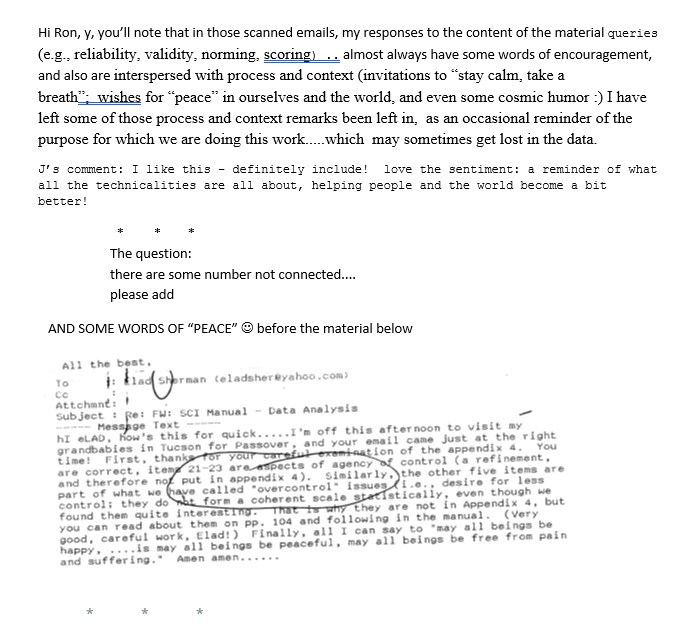
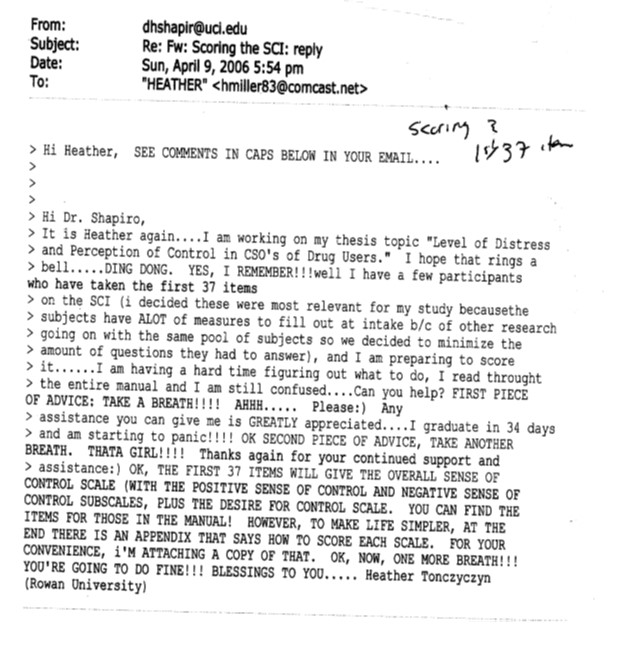
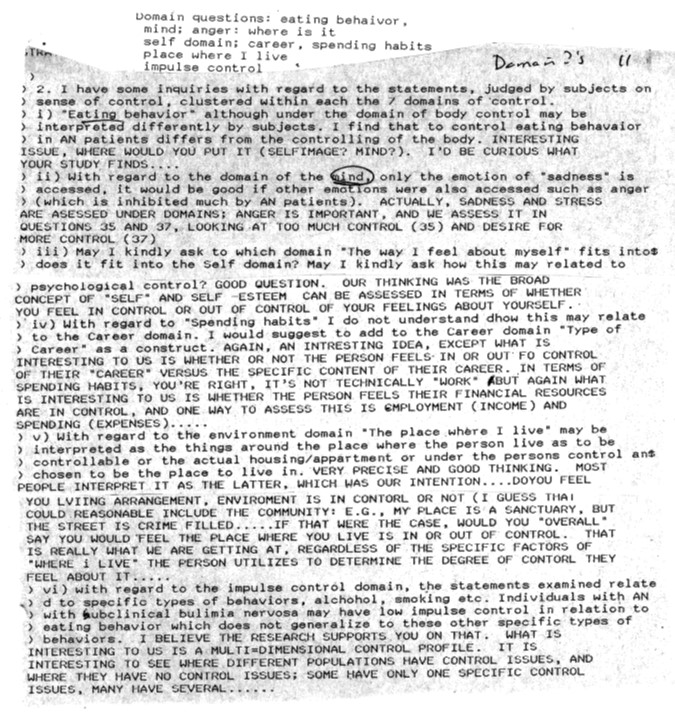
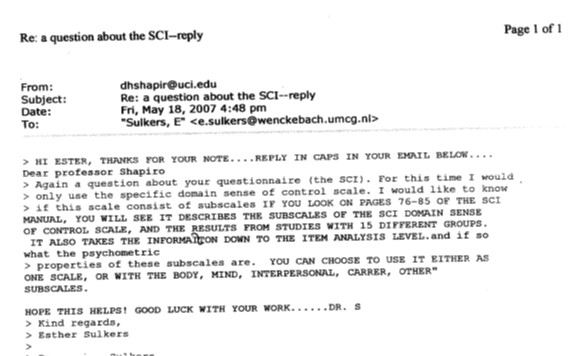
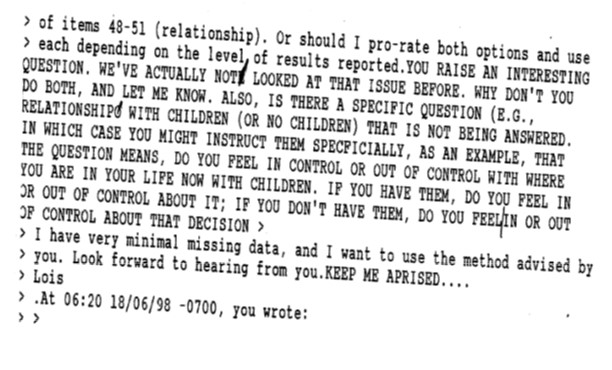
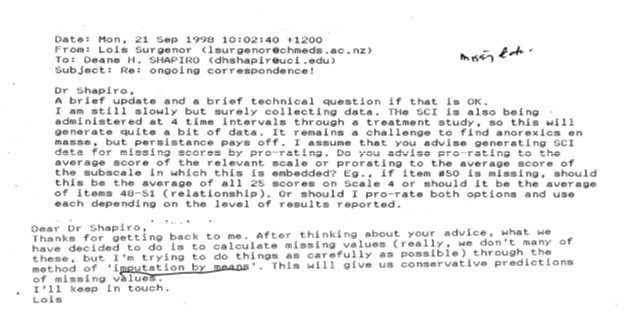
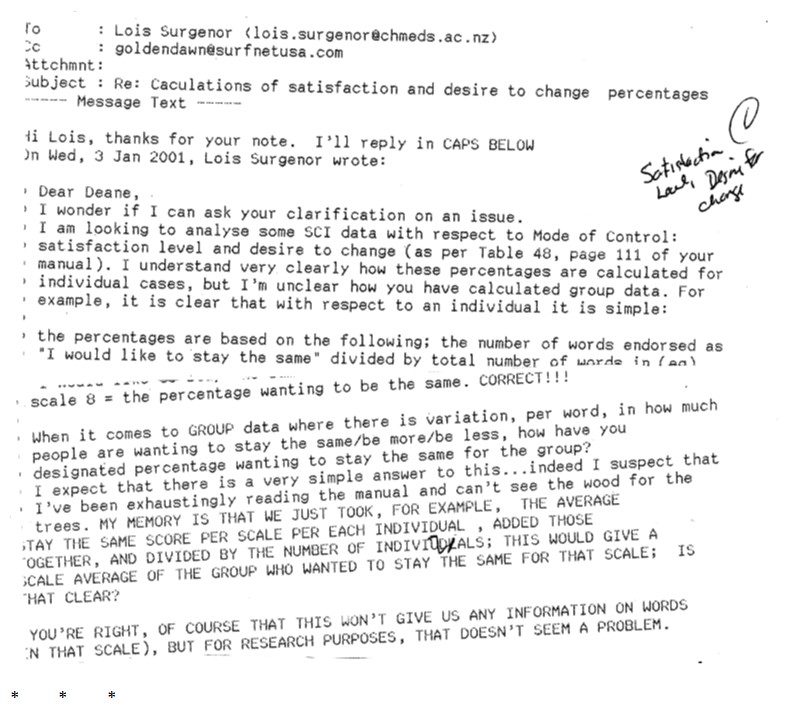
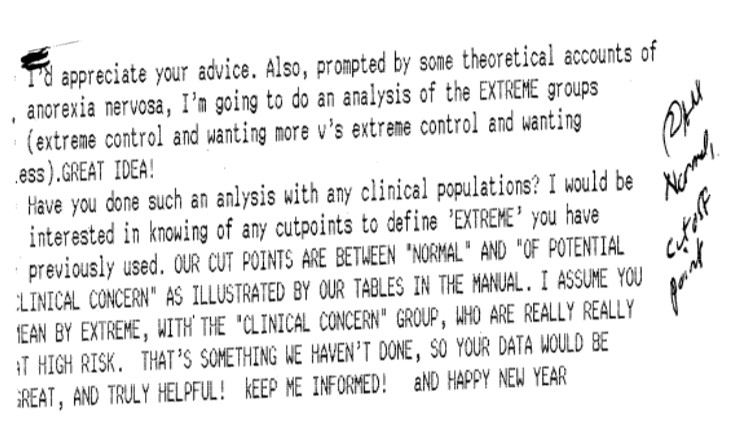


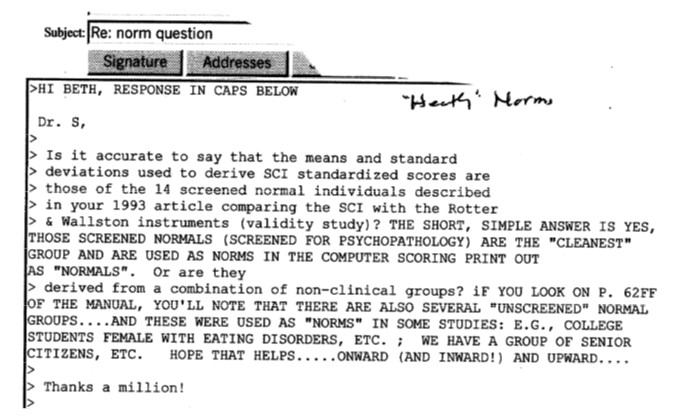
Please check the manual for the different clinical and normative groups used (p. vi for summary; and Chapter 5 pp 57-63) for more detail on each group. One reason we have a high confidence in this inventory is that you can see for each scale, that the groups fall into what would be an expected order (e.g., Figure 6-7-8 , pp. 66-68) for standardized and raw scores for the General Domain sense of control for 13 groups).

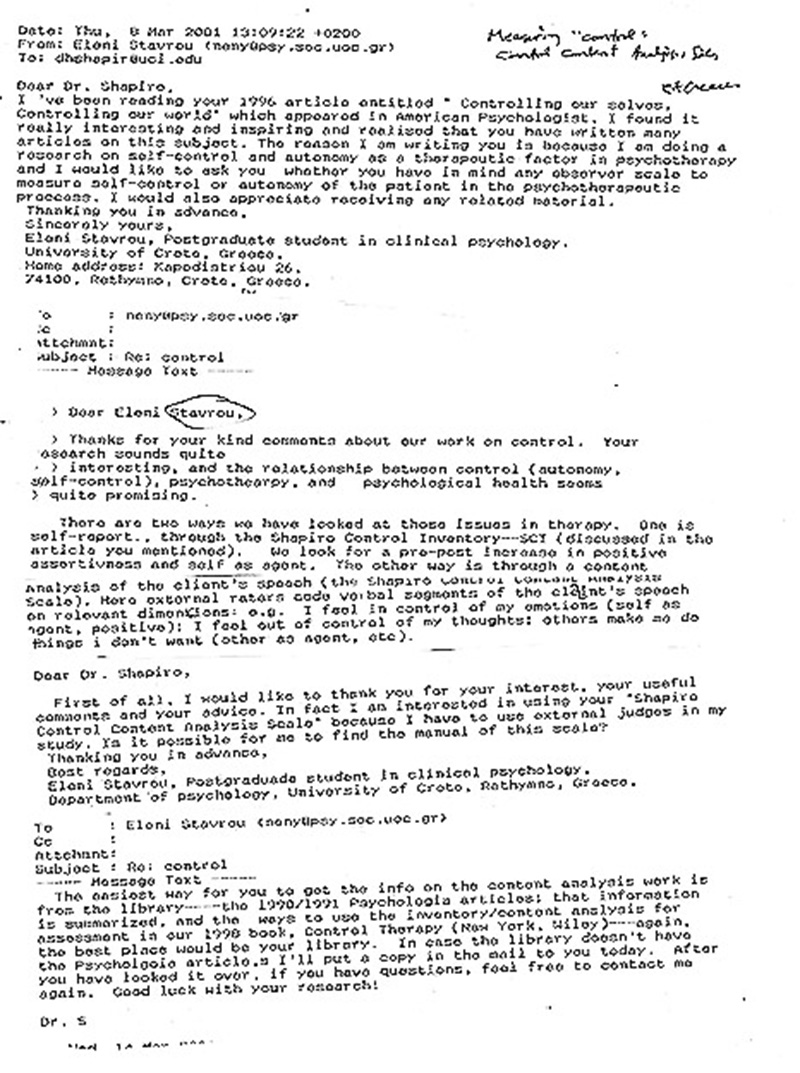
In doing Control Therapy, it is important to use the entire SCI measure (which takes about twenty minutes to complete) because the twenty page written report is based on the entire test. However, for research purposes, where many other tests are being administered, the short answer to this question is yes, as indicated in a number of responses below. In the material below, the case is made for using the entire SCI, but some “nuances” are offered in terms of scales.
*Using the Overall Sense of Control Scales (1-3) and Desire for Control Scale:
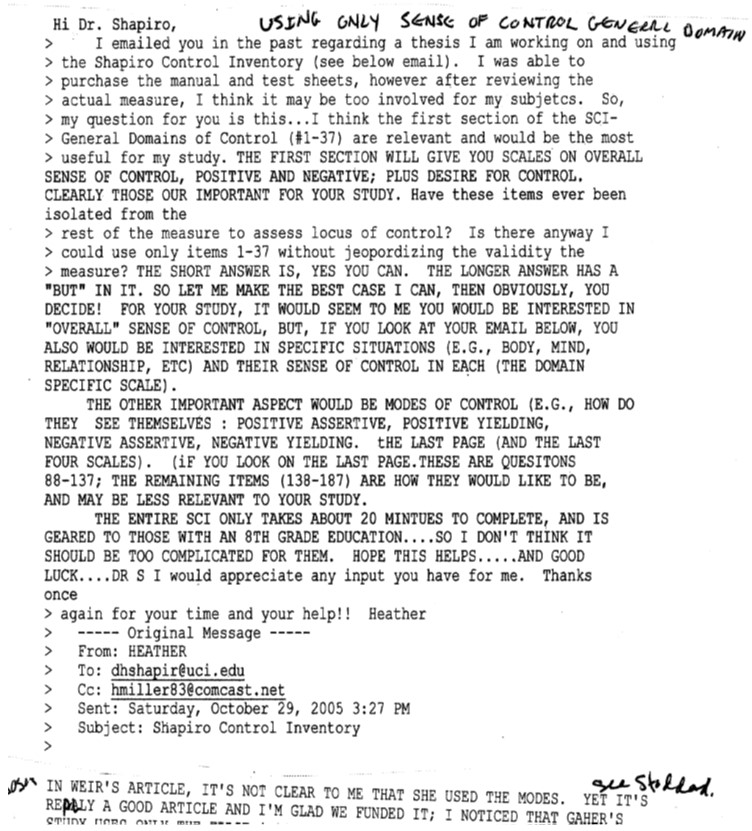
Study used only the first four scales.
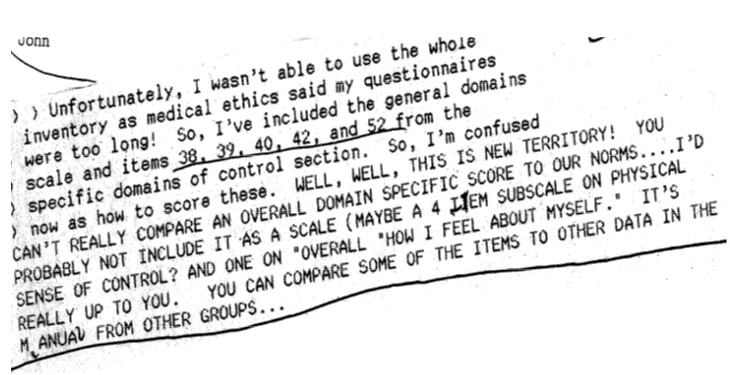



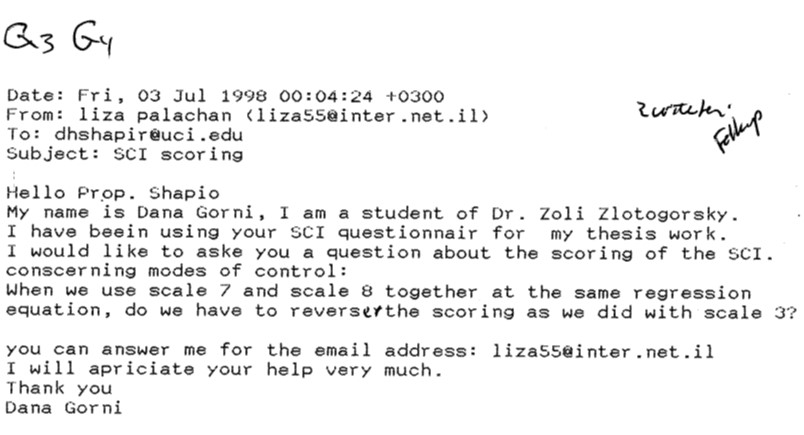
Hi Dani, the two modes are different statistically; (where as Scale 3, negative sense of contorl IS the opposite of the positive sense of control) and therefore can be reversed. Therefore, it would be best to use Negative assertive and negative yielding separately. However, if you are trying to see if the “negative modes” impact your thesis, then it would be interesting to see what they results are (looking at them combined, and looking at them seperately).

The question below involves scoring the SCI. A link to the scoring key is offered at the start, then the response to the letter writer.The question below involves scoring the SCI. A link to the scoring key is offered at the start, then the response to the letter writer.
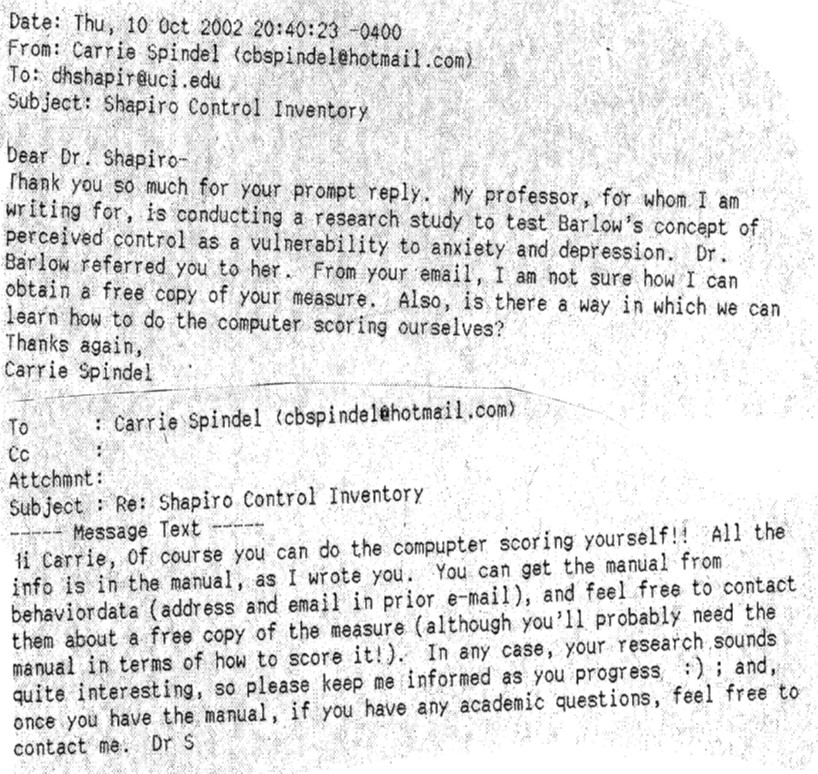
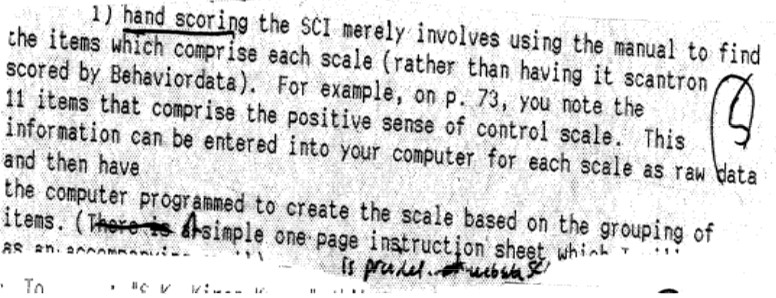
We received several questions over the years from students struggling re: finances and the cost of research, on if/how they could obtain free copies of the SCI, Manual, Control Therapy book, etc. (an example below).
We’re now happy to say that all of the above is FREE on the website. At least one small impediment to doing research has been removed!

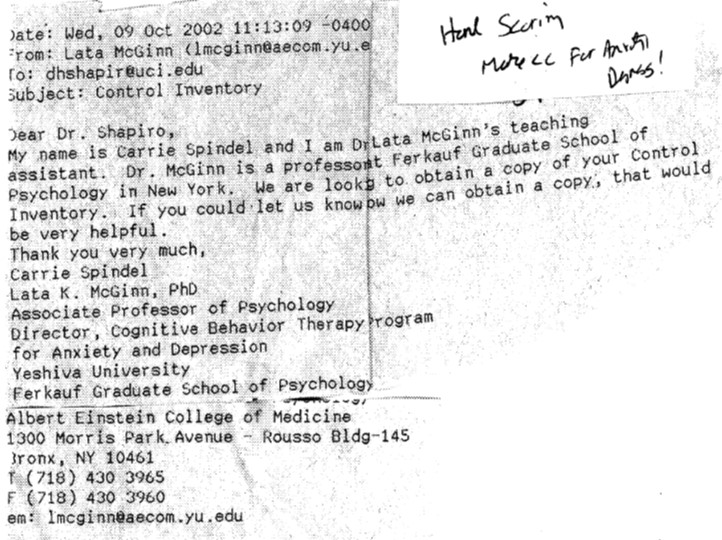
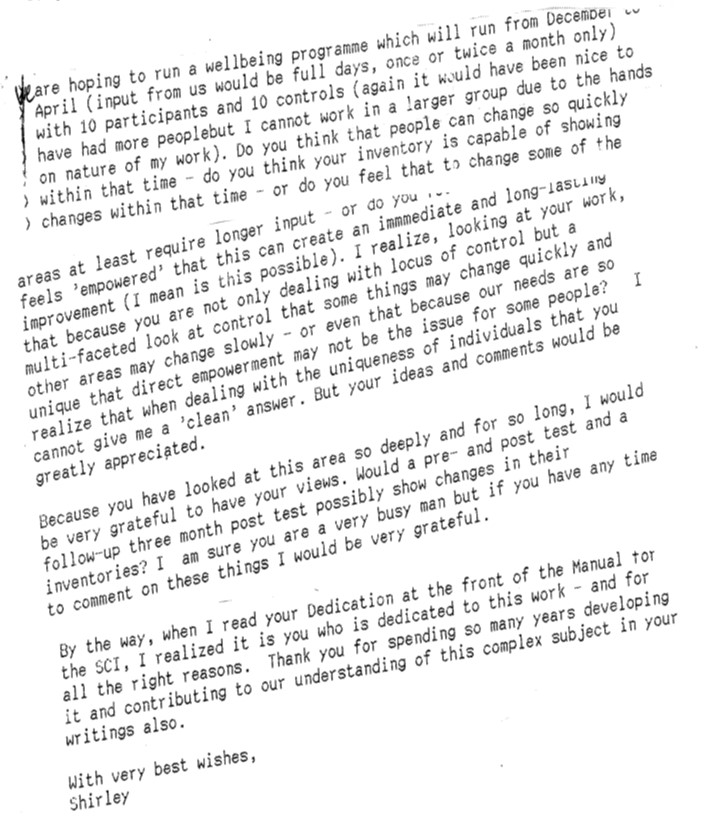
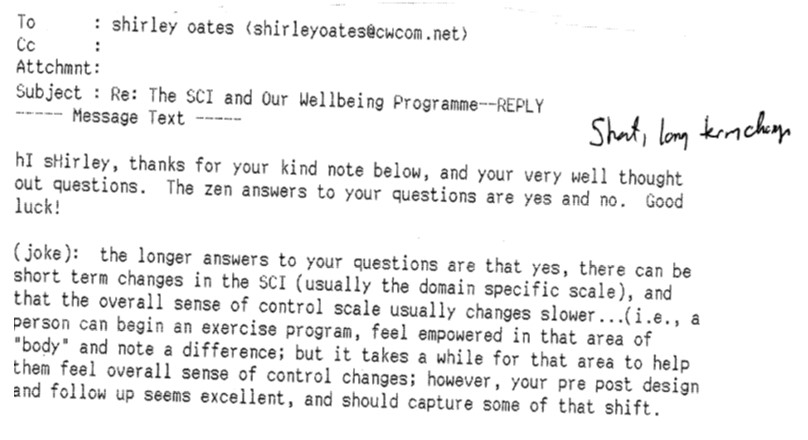
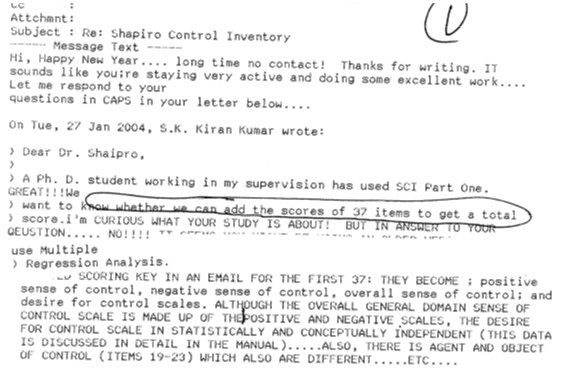
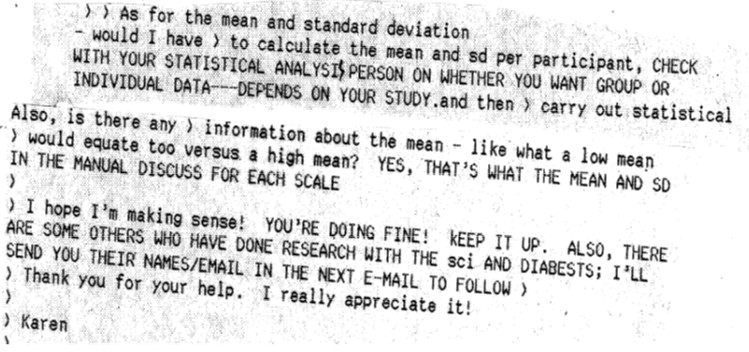
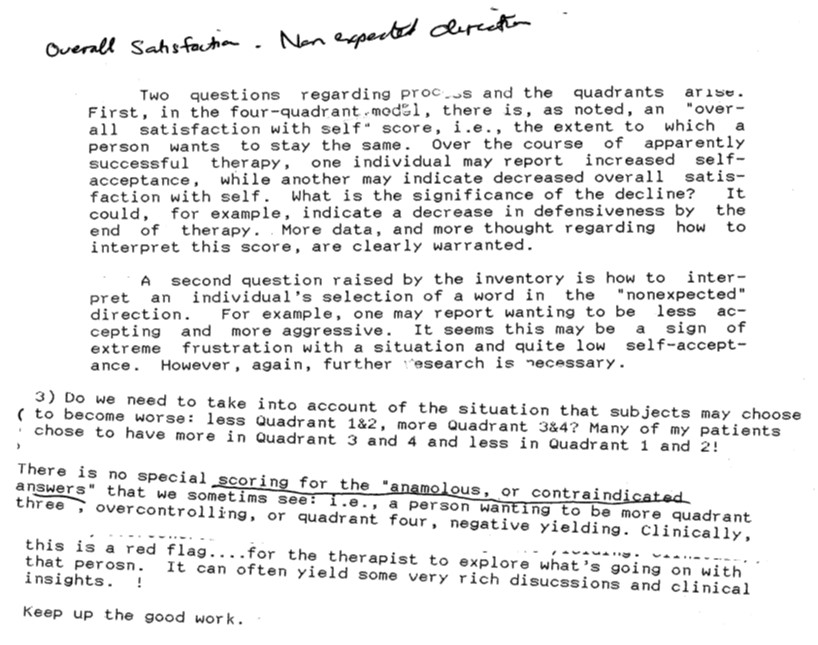
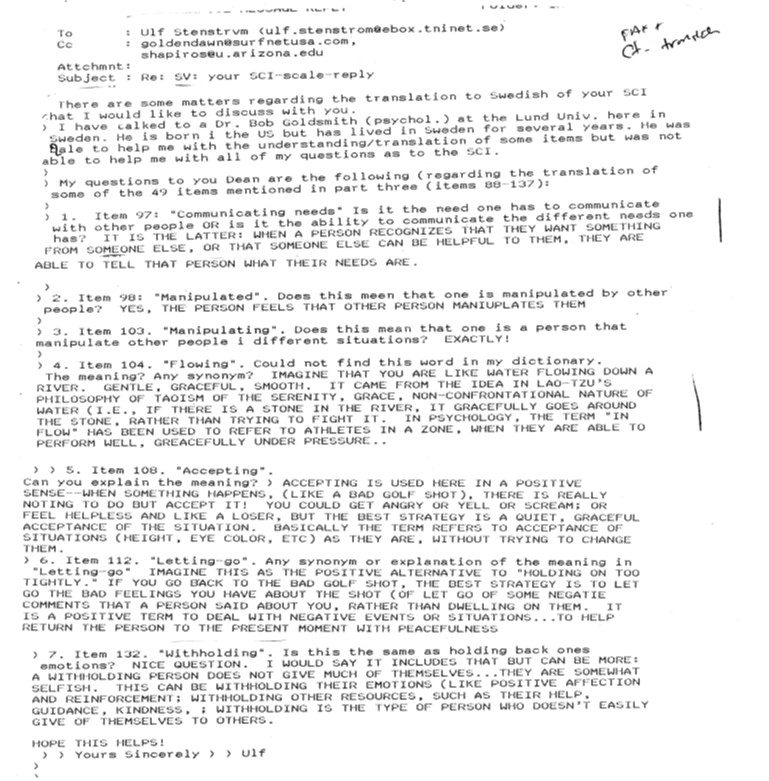

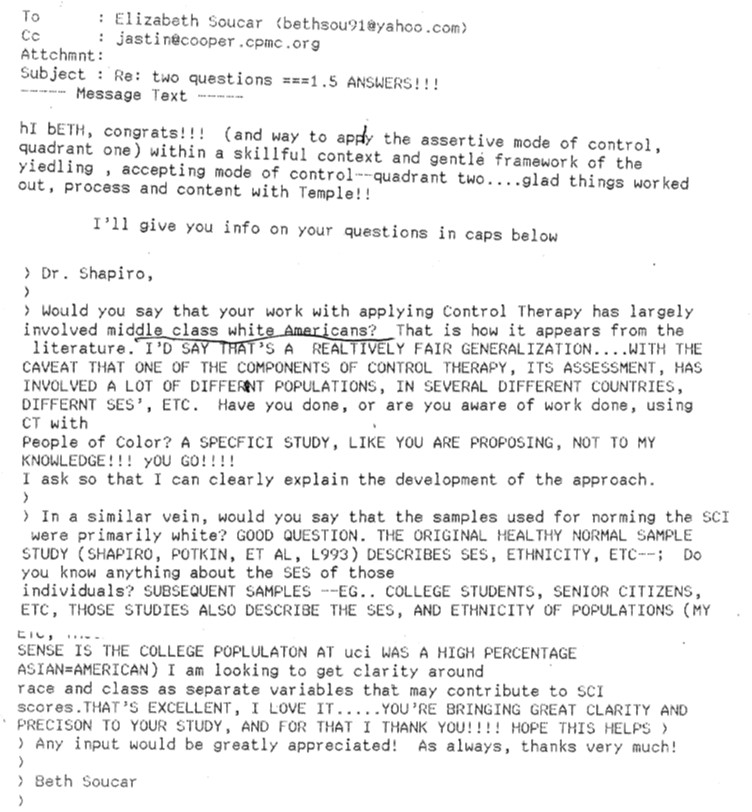
Re: sense of control and desire for control:

Re: modes of control.
In the early stages of the development of the modes, we’ve looked at this in terms of the item reliability of each of the modes. We found that no items could be cut from the Positive yielding/Acceptance mode; or the negative assertive mode and still keep the high alpha reliability. We did find that two words could be cut from positive assertive (logical, well-organized); one word from negative yielding (past oriented) and still keep the high alpha reliability of those scales. However, since we had already collected so much data, and the scales all had high alpha reliability, we did not feel changing the scales by deleting those three words was sufficiently valuable. see p 36 of the manual)
We did consider a shortened version of the 49 words which make up the modes (drawing four from each), based on our intuition, and strong alpha item correlations. But we never tested a shorter version since we already had a data base of several thousand....These modes are also reflected in questions 9-12 of the Sense of Control Scales. Those questions could be looked at and correlated with the current four modes; and new reliability and validity data could be obtained from using the shorted versions, and compared to the original.
| POSITIVE ASSERTIVE | POSITIVE YIELDING/ACCEPTANCE | NEGATIVE ASSERTIVE | NEGATIVE YIELDING |
| Assertive | calm | rigid | timid |
| Independent | accepting | over controlling | indecisive |
| Confident | listening | critical | manipulated |
| Leading | gentle | impatient | dependent |
We decided that at a certain point it is time to move on from the “assessment” inventory development phase to the therapeutic intervention phase of Control Therapy, and how the two were intimately connected. However, if a shortened version could be developed and tested, and found as reliable and valid, and clinically useful, that would be great! (anyone feeling adventurous? )
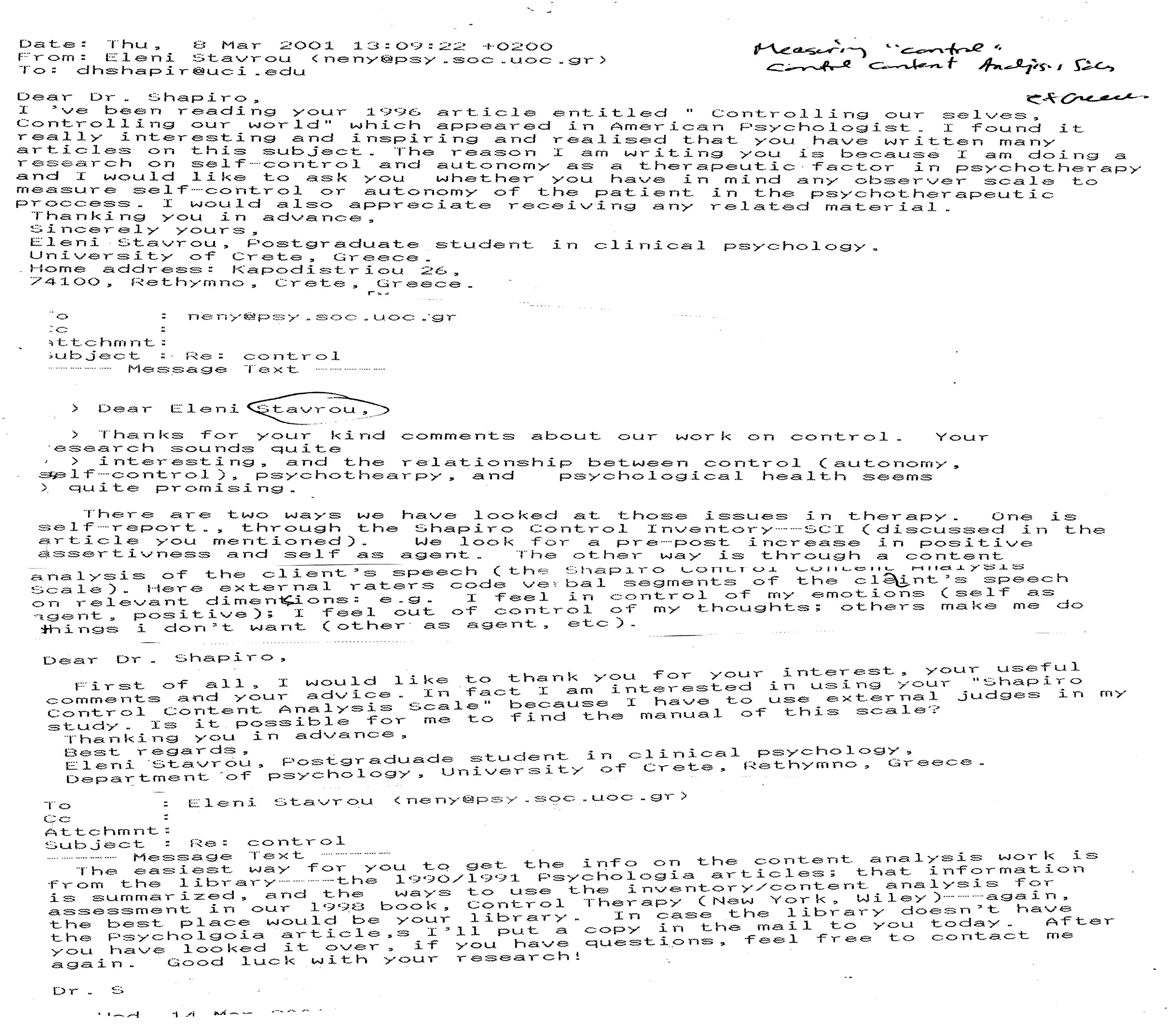

See What is Control Therapy: Overview
Client view point
Therapist/Trainee view point
A social worker in New York wrote to say that his supervisor suggested he use Control Therapy with a female client who was exiting an abusive relationship. He reached out to me after looking at the Control Therapy material on the website(controlresearch.net) and asked if I could provide some help and guidance What follows is a type of “Cliff notes” series of dialogues over a few months to help guide him in his study and practice of Control Therapy. This included 3-page bite size summaries on 1. An Overview of Control Therapy; 2) Assessment of Control Profile, including the SCI 3) 8-12 Session Overview; 4) Modes of Control 5) Control Mode Dialogue; 6) Control Mode Rehearsal; 7) Desire and Agency of control. This material may provide a helpful introduction to clinicians wanting to learn more about Control Therapy.
See: Control Therapy Grand Rounds.
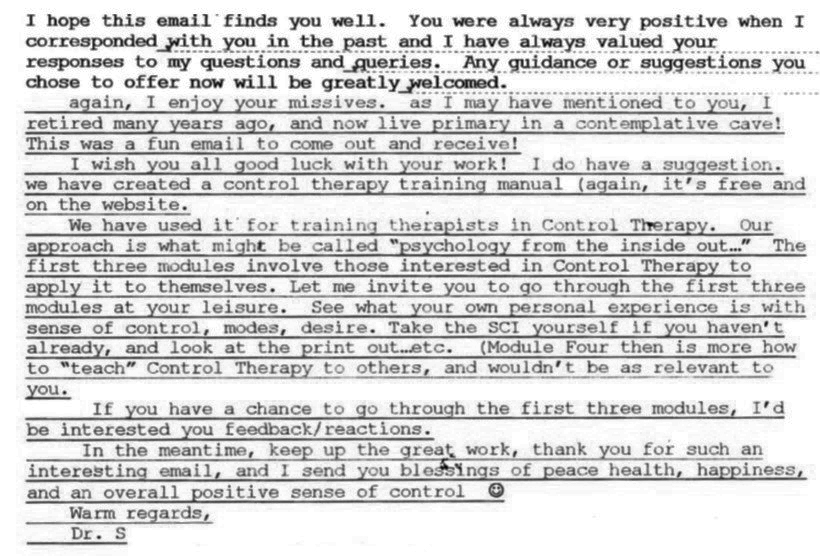
Currently I have a few comments/inquires with regard to using the SCI:
1. It seems to me that the mode of control is similar to coping strategies. Mode of control seems to be only one form of coping strategies AN individuals use to deal with a situation out of their control. May I ask whether you may have access to literature of methods of attaining control?
MODE OF CONTROL IS ACTUALLY FOUR DIFFERENT STYLES.....YOU MAY WANT TO READ IN THE MANUAL MORE, OR OBTAIN A COPY OF OUR BOOK, CONTROL THERAPY.....TO READ MORE ABOUT THE CONTROL MODES AS COPING, AND A DETAILED COMPARISON OF THEM WITH OTHER COPING STRATEGIES.

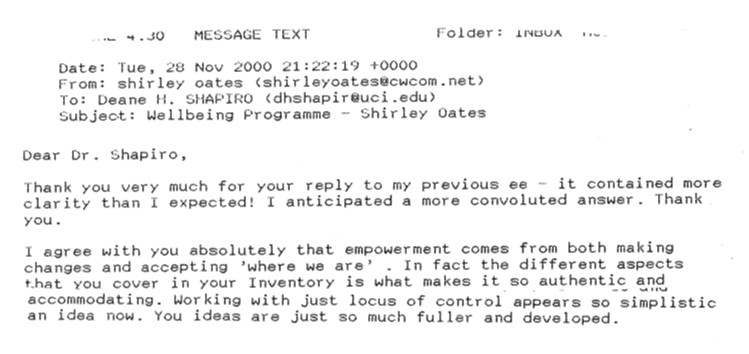
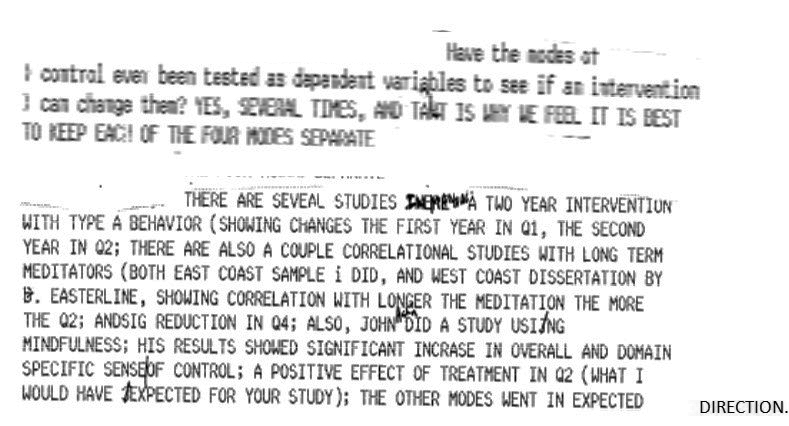
Note, the most updated version of treatment adherence (developed with Dr. Beth Soucar) and arising out of her great questions below, can be found in Appendix One of the Control Therapy Training Manual.
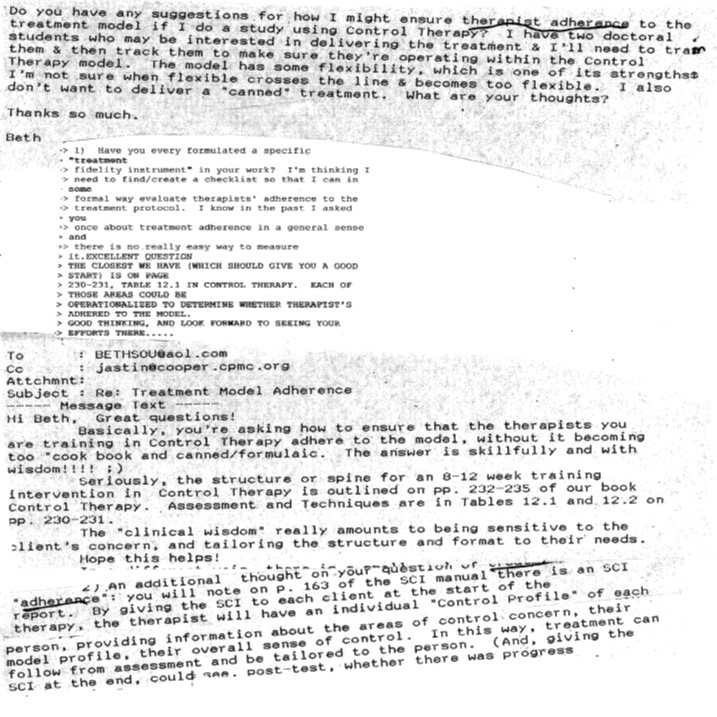
In those scanned emails, my responses to the content of the material queries (e.g., reliability, validity, norming, scoring) .. almost always have some words of encouragement, and also are interspersed with process and context (invitations to “stay calm, take a breath”; wishes for “peace” in ourselves and the world, and even some cosmic humor I have left some of those process and context remarks been left in, as an occasional reminder of the purpose for which we are doing this work.....which may sometimes get lost in the data.